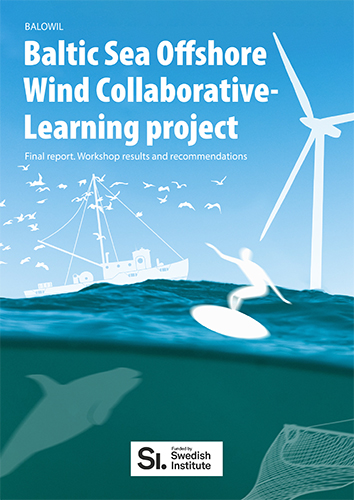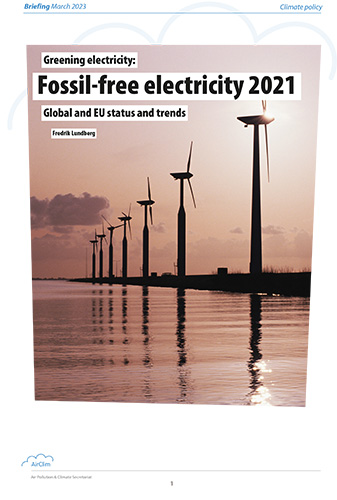
Berlin leads fight on air pollution, Rome bottom
A long-term strategy to reduce car use and limit high emitters gave Berlin the top position in a ranking of the performance of seventeen European cities in combatting air pollution.
Berlin, Stockholm and Copenhagen are the leading cities in Europe for combatting air pollution according to a ranking of seventeen European cities, carried out by Friends of the Earth Germany in cooperation with the European Environmental Bureau. Rome, Milan and Düsseldorf came bottom.
Berlin took top spot in the ranking for its efforts to improve air quality. The city has a broad strategy to tackle high emitters as well as a long-term plan to get people out of their cars and into public transport and other modes of transport such as cycling and walking.
Runners-up Stockholm and Copenhagen were praised for having the best economic incentives, such as congestion charges for vehicles entering the city centre and parking management to reduce the number of vehicles in the city.
Rome, Milan and Düsseldorf came bottom, showing few efforts in any of the nine air quality measures used to rank the cities. Rather low marks were also given to London, host of next year's Olympics, as well as Madrid and Brussels.
The purpose of the city ranking was to highlight what has been done to improve air quality in western European cities, to stimulate the exchange of knowledge and experiences between cities throughout Europe and to demonstrate that reducing emissions from local traffic and meeting air quality standards is perfectly feasible.
The 17 cities were selected according to the similarity of their air quality problems, their high pollution levels, their political importance, size, or because they presented good reduction practices.
The ranking was determined according to 10 criteria, including traffic management, modal shift to public sustainable transport modes, technical measures and public information. The measures were selected based on their potential to reduce emissions of particulate matter and soot from traffic and non-road pollution sources. For each of the criteria, cities were given a grade and ranked accordingly.
Cities were judged on their action taken between 2005 and 2010, as 2005 is the date of entry into force of limit values for particulate matter (PM10). This means that cities that took most measures before 2005 would not come out so well in this ranking.
Bad air quality is a major health problem in most European cities and a majority of big cities are struggling to come in line with European air quality standards.
In the most polluted cities the average life expectancy is reduced by over two years on average. For the whole of the EU, the health cost of bad air quality is estimated to be nearly half a million premature deaths each year. In economic terms, the health damage from air pollution in 2000 was estimated to amount to between €277 and €790 billion for a year.
Table : For each category of measures, cities could be attributed ++ (very good: 5 points), + (good: 4 points), 0 satisfactory: 3 points), - (fair 2 points), or -- fail (1 point).
[Click on image to enlarge]
What is the recipe for achieving a top score?Reduction Success Local EmissionsThe PM10 daily value is set at 50μg/m3 24-hour mean with a maximum of 35 days a year. In Berlin the exceedances decreased by 45 per cent between 2005 and 2009. Zürich has also decreased the number of days. Some cities show decreasing numbers but have been given lower marks since figures appear to be inconsistent or there has been manipulation of the data. In Madrid for instance stations have been moved to less polluting areas. Low Emission Zones and Bans on High EmittersLow emissions zones (LEZ) can apply to all vehicles or only heavy goods vehicles. The former were graded higher. The time of introduction, the size, the height of the threshold (Euro 4 and better gave top points) and enforcement were also factors affecting the grading. Berlin was the only city given full marks. Its LEZ covers the entire inner city, and from 2010 only Euro 4 and retrofitted Euro 3 cars are permitted. Public Procurement Clean CarsMunicipal vehicles and buses cover great distances in the city. They also include a large share of the heavy vehicles and diesel vehicles in the city. Cities can take an array of measures to reduce emissions from public vehicles, such as only purchasing cars that meet the latest Euro standard, retrofitting vehicles in the existing fleet and investing in electric and gas vehicles. Non-Road Mobile Emissions SourcesIn some cities Non Road Mobile Machinery (NRMM) is responsible for up to 30 per cent of the traffic pollution. Zürich requires its new contractors to equip diesel-powered vehicles over 18KW with particle filters and to only use low-emission fuel. Vienna has a logistics plan for construction traffic, which aims to channel such traffic along main roads with tunnels and side barriers. Use of Economic IncentivesCongestion charges have been proved effective in reducing traffic and air pollution. Stockholm introduced a trial congestion zone in 2006 and made it permanent in 2007. Journeys in the city area are subject to a fee varying between €1 and €2. As a result incoming traffic decreased by 18 per cent. London introduced a congestion charge zone back in 2003, but recently weakened it by halving the charge, hence its lower rating. Increasing parking fees is another way to reduce traffic in the city. Scrapping and retrofitting bonuses have also been considered in this part of the evaluation. Traffic and Mobility Management Incl. Modal ShiftThis ranking looked at the reduction in motorised transport between 2004 and 2010, for instance in Stockholm 14 per cent of inhabitants switched from driving their own cars to public transport and cycling. In Berlin, car-ownership has dropped by 7 per cent between 1998 and 2008. Cities with reduced speed limits, innovative mobility management programmes and an ambitious overall transport strategy have also been given marks in this section. Modal Shift to Public TransportCities' investments plans and expansion of services, changes in the bus or tram fleet, interconnectivity schemes (i.e. park and ride) were the focus for this section. The measures implemented in the past five years as well as solid plans to do so in the future were the basis for evaluation. Vienna is right now expanding two of its metro lines and is continuously increasing the number of park and ride spaces available, currently standing at 30,000. Madrid is mentioned for having very low fares (€1) compared to most European cities. Modal Shift to Walking and CyclingAs for public transport, actual investments over the past six years are considered as well as concrete future plans with political and financial support. Lyon is a city with a low cycling share (2 per cent in 2006), but has expanded its cycling lane network by 33 per cent between 2004 and 2009, hoping to achieve a cycling share target of 5 per cent in 2014. Copenhagen is well known for being a cycling city. In 2009, the city had 35,000 bike racks and 360 km of bike lanes, with current activities extending the infrastructure. There are currently 40 km of cycling routes and plans for a further 22 routes totalling 110 km. Bicycles can be taken on all metro trains (with a few exceptions at rush hour). Transparency and Policy CommunicationSeveral cities provide citizens with online real-time air quality data. There is also a partnership with a local radio station. There are also different ways to disseminate the information through the media, for example through press releases or, as in Lyon, by establishing a partnership with a public radio station. Campaigns that enable people to take their own action to improve air quality as well as consultations with the public about measures to improve air quality are also taken in to account in this section. |
Visit http://sootfreecities.eu/ for more information

 Download this issue
Download this issue
 If all the 20 planned coal-fired power plant projects in Germany are realised, they would together emit more than 140 million tonnes of carbon dioxide annually from 2050 onwards. This would make it impossible to achieve the climate targets of the German government.
If all the 20 planned coal-fired power plant projects in Germany are realised, they would together emit more than 140 million tonnes of carbon dioxide annually from 2050 onwards. This would make it impossible to achieve the climate targets of the German government. Significant additional emission reductions and accompanying environmental improvements can be achieved in Europe by 2020. Health benefits alone far outweigh the extra costs for emission control.
Significant additional emission reductions and accompanying environmental improvements can be achieved in Europe by 2020. Health benefits alone far outweigh the extra costs for emission control. A proposal for a revision of the EU Energy Tax Directive, launched in April by the European Commission, has triggered strong reactions from some of the EU member states, including giants like the UK and Germany.
A proposal for a revision of the EU Energy Tax Directive, launched in April by the European Commission, has triggered strong reactions from some of the EU member states, including giants like the UK and Germany. The European Commission do not believe that their own proposal for a new Energy Efficiency Directive will be enough to meet the 20 per cent energy savings target by 2020.
The European Commission do not believe that their own proposal for a new Energy Efficiency Directive will be enough to meet the 20 per cent energy savings target by 2020. The fate of the vast boreal forest belt of the northern hemisphere is crucial for global climate. A new AirClim-report looks into our possibilities to protect and manage these forests for climate mitigation. Reducing paper consumption turns out to be an option.
The fate of the vast boreal forest belt of the northern hemisphere is crucial for global climate. A new AirClim-report looks into our possibilities to protect and manage these forests for climate mitigation. Reducing paper consumption turns out to be an option.










